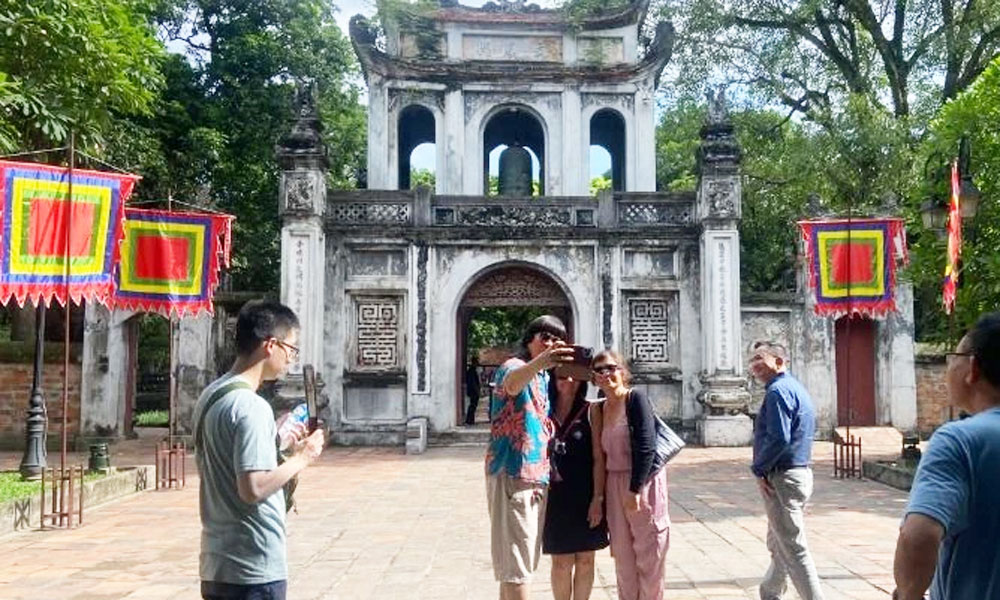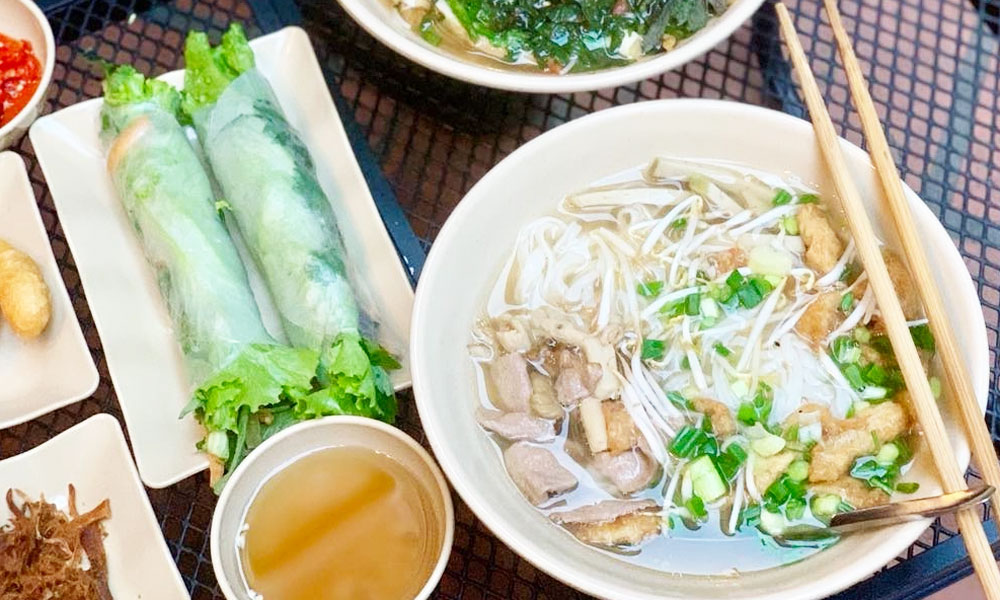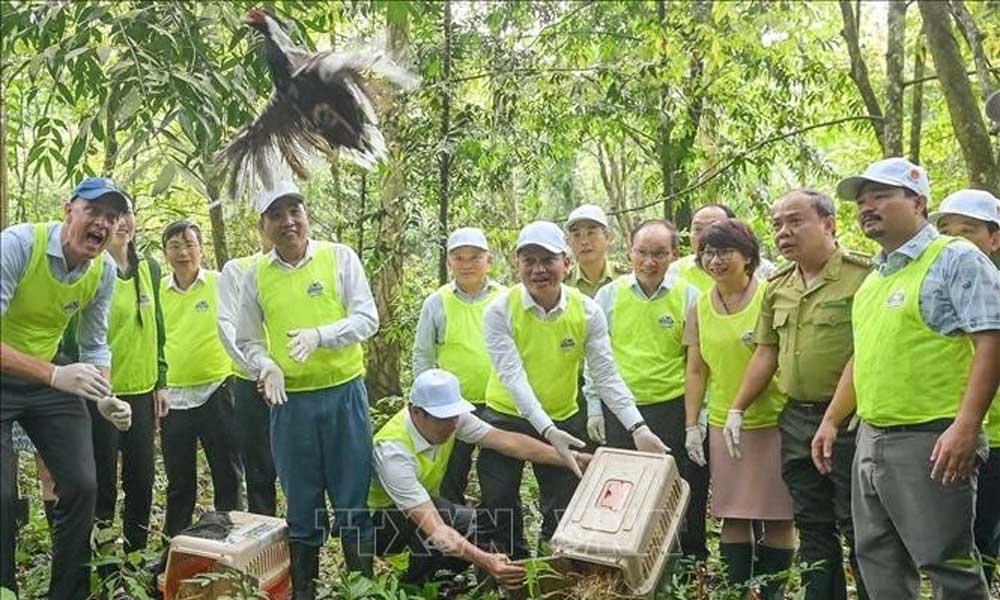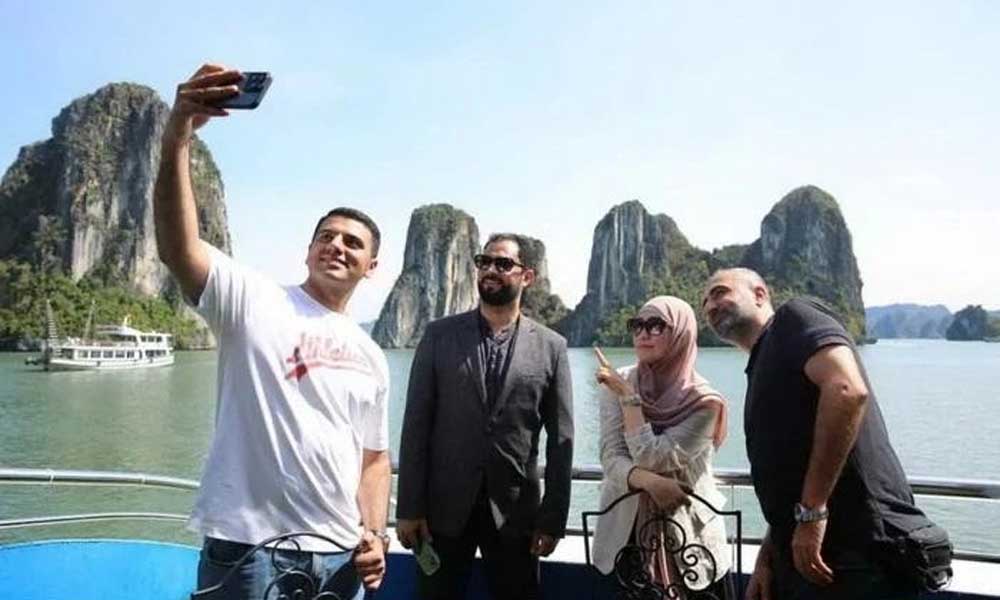Bat Trang and journey to awaken memory
Amidst the dynamic transformation of cultural tourism, Bat Trang — an ancient pottery village on the banks of the Red River — is steadily asserting its pioneering role in developing an eco-museum model for traditional villages. This initiative marks a significant step in community-led efforts and serves as vivid proof of the harmonious integration between heritage preservation and economic development.
With a history of nearly 700 years of formation and development, Bat Trang Pottery Village not only preserves and fosters the quintessence of traditional ceramics but also accumulates precious cultural layers: ancient architecture, spiritual spaces, scholarly traditions, and unique lifestyles of 19 family lineages.
 |
|
Visitors explore Bat Trang Pottery Village. |
These rich cultural materials serve as the foundation for an open eco-museum model where each villager becomes a character in the story of the village, acting as a living guide who attracts both domestic and international visitors.
The highlight of the eco-museum concept is its focus on the 5.4-hectare core area of the ancient village, where distinctive values converge: narrow alleys, moss-covered walls, and traditional ceramic kilns — all symbolic of the village’s craftsmanship and cultural preservation as well as a vivid reflection of the craft village’s evolution through time.
In addition, Bat Trang has achieved numerous significant milestones: its traditional festival has been recognised as a National Intangible Cultural Heritage, and it has become the 67th craft village in the World Crafts Council Network. These are firm foundations for Bat Trang’s eco-tourism model to potentially become a standout example of community-based cultural tourism development in Viet Nam.
The World Crafts Council awarded Bat Trang the title of “World Craft Village for Ceramics” and Van Phuc the title of “World Craft Village for Silk Weaving”.
The eco-museum model stems from the needs, aspirations, and active participation of the very people who live and work in Bat Trang and understand it as part of their own flesh and blood.
In open discussions between local authorities, experts, artisans, and households, many of the village’s sons and daughters have pledged their intellect and experience as well as called for community unity. Experts — from architects and painters to cultural researchers — have contributed insightful and nuanced perspectives.
Painter Nguyen Manh Duc, a professional advisor, emphasises the spirit of a “living museum”, where material production goes hand in hand with the creation of spiritual values, enhancing product value through cultural storytelling.
He advocates for the idea of awakening the past, living in the present, and looking towards the future, to elevate existing values to new heights. Many villages have been recognised as heritage sites but struggle to develop due to restrictive regulations, but Bat Trang is different. The eco-museum model respects developmental dynamics and originates from the material and cultural life of the villagers themselves.
Beyond restoring the landscape, the design team focuses on storytelling elements. Each household becomes a “station” along the journey, offering visitors a vibrant experience through sight, sound, touch, and taste.
For instance, in Bat Trang, there are stories beyond ceramics such as traditional medicine, scholarly pursuits, or the experience of a simple potter’s meal, and traditional desserts such as che kho or banh chung. These culinary highlights offer authentic emotional connections with the heritage.
Alongside enthusiasm and consensus, several practical issues have been frankly raised by residents. These include environmental concerns with waste from production and daily activities, as well as pollution that directly affects visitors’ experiences. Establishing community regulations and unified awareness on preserving the landscape and hygiene is imperative.
Another challenge is fire safety. Due to Bat Trang’s narrow alleys, high walls, and closely packed houses, some areas are overcrowded and require optimised safety planning.
Although the project has yet to receive state funding, local authorities and residents are actively seeking temporary and appropriate solutions for the initial phase.
Moreover, the questions of benefit-sharing mechanisms have arisen. Some participating households have asked: Who benefits? Who pays for renovations? Who operates the tours? These are matters that must be clarified with specific regulations to prevent initial enthusiasm from waning due to lack of support and unequal distribution of benefits.
Additionally, issues of identity and brand recognition are also of great concern. In various meetings, even the matter of designing a logo for the eco-museum has consumed considerable time, effort, and opinions.
The Bat Trang Ancient Village Eco-Museum project is a tourism product, but more importantly, it is a process of awakening memory and retelling the story of the craft village through a contemporary lens, thus affirming the vitality of traditional culture in a constantly changing world.
When villagers become storytellers, and when each brick, roof tile, and way of life is placed into its proper cultural context, that is not only preservation but also revival and sustainable development.
If Bat Trang succeeds, it will pioneer a pathway for an eco-museum model in which conservation art can truly develop hand in hand with the community economy in the new era.
 Bắc giang
Bắc giang












Reader's comments (0)